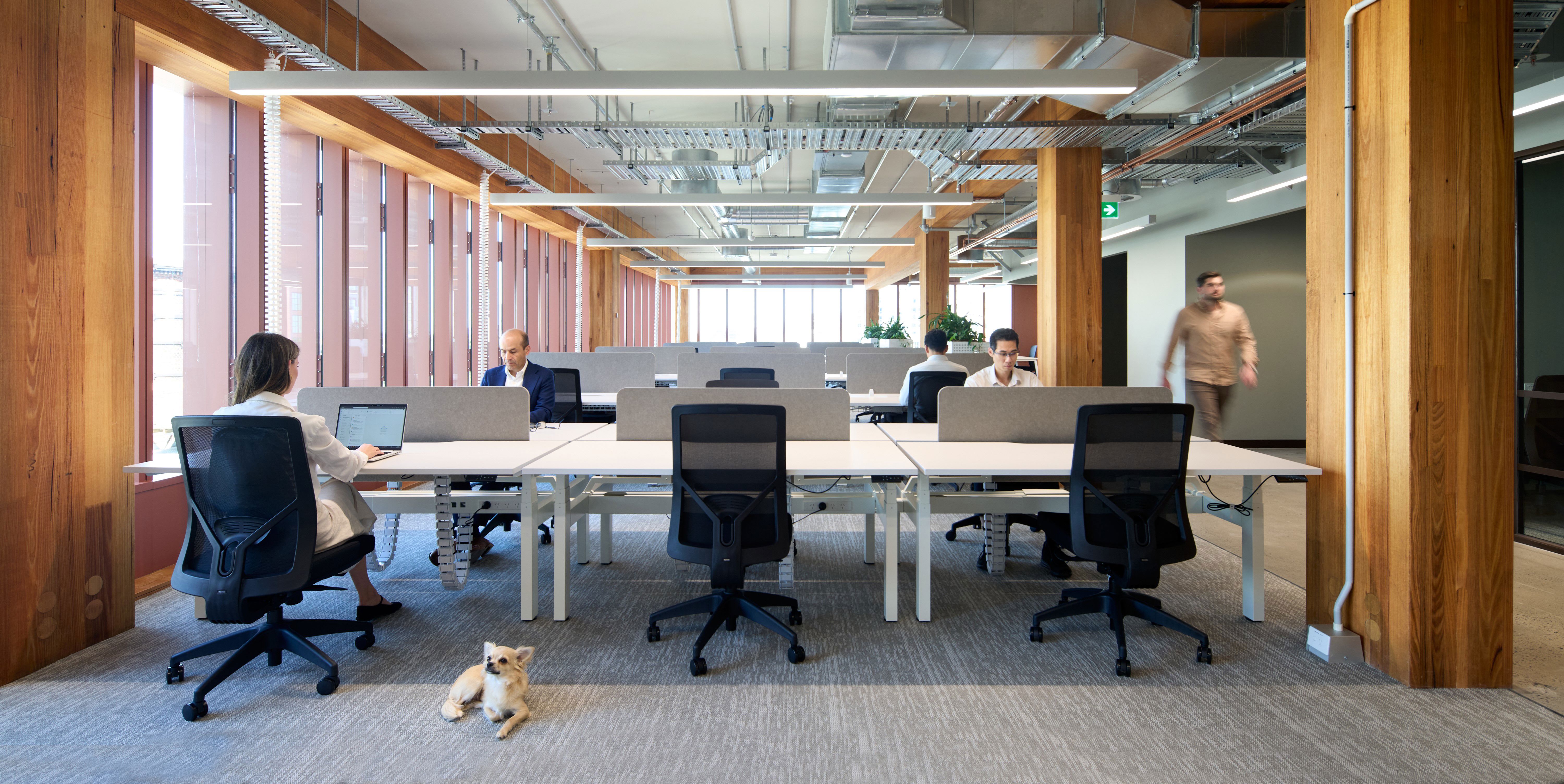
T3 puts the wood in Collingwood office sustainability
State-of-the-art approach cuts carbon with cross-laminated timber
In its first Timber Building program investment, the CEFC backed T3 Collingwood, a 15-storey prime-grade office tower which brought environmental and social sustainability to the workplace through the delivery of one of Melbourne’s tallest hybrid mass timber buildings.
$70m
CEFC finance
34%
lower embodied emissions
Net zero
operational target
Our T3 buildings are sustainability-driven, well-located, technologically efficient, and adjacent to transit. They’re more than just office buildings. They’re places for building culture, collaboration, and community.David WarnefordCountry Head of Australia and New Zealand, Hines
Our investment
The CEFC, in its first investment through the specialist CEFC Timber Building Program, committed up to $70 million in debt finance to the Melbourne T3 Collingwood environmentally-friendly timber high rise building.
The project also attracted finance from Madigan Active Debt Fund, backed by the Victorian Funds Management Corporation.
The 15-storey prime office tower, developed and led by global real estate developer and investment manager Hines, was completed in late 2023. T3 Collingwood is one of Melbourne’s tallest hybrid mass timber buildings and was awarded a Green Building Council of Australia (GBCA) 6-star Green Star (Design) rating.
The CEFC finance was repaid in March 2025.
our impact
Cutting embodied carbon emissions associated with Australia’s $65 billion construction sector can play a critical role in our transition to a net zero economy. Traditional steel, aluminium and cement production have been widely considered difficult to abate materials.
While mass timber is less carbon-intensive than traditional construction materials such as concrete and steel, timber’s ability to also sequester carbon as it grows provides it with a negative carbon footprint.
The commercial property sector has been making significant progress to reduce operational carbon, and the CEFC is seeking to accelerate the focus on embodied carbon. Timber has a vital role to play and represents the next frontier for the property sector.
Locking in mass timber construction in new projects, can help develop local skills and experience, supply chains and delivery capabilities, all of which can catalyse more timber-based building activity into the future.
T3 targets double impact
T3 Collingwood will deliver a dual emissions reduction impact – cutting embodied carbon levels during the construction phase and targeting market leading net zero emissions once operational.
Issued for Construction documentation indicated a 34 per cent decrease in embodied carbon, as determined by the GBCA Green Star Design & As-Built review methodology, with a reduction in carbon of 2,850 tonnes compared to standard concrete design.
The hybrid construction approach used a glue laminated timber structure with cross-laminated timber flooring on top of five reinforced concrete podium levels.
Victorian Oak was sustainably sourced from two specialist Victorian mass timber manufacturers, XLam Australia and Australian Sustainable Hardwoods. T3 Collingwood used about 4,000 cubic metres of wood for the structural frame, fixing in place about 3,000 tonnes of carbon.
As one of Australia’s leading institutional non-bank lenders in the real estate market, we believe we have a responsibility to invest in projects that are working towards using sustainably sourced construction methods and materials to reduce operational and embodied carbon. We were keen to work with the CEFC on this development. The use of leading environmentally sustainable construction techniques strongly aligns with Madigan Capital’s investment strategy.Michael WoodFounder and CEO, Madigan Capital
Hines T3 global portfolio
T3 Collingwood will be the first Australian addition to the Hines T3 global portfolio, a timber, transit and technology-orientated development methodology which supports the delivery of credible decarbonisation pathways.
The T3 construction replaces traditional structural systems such as concrete and steel with prefabricated solid wood systems, to create best-in-class projects in a fast, clean, sustainable and aesthetically pleasing manner.
The approach encourages owners, developers, architects, engineers and builders to use mass timber as an alternative to conventional construction materials such as concrete and steel for their projects.




